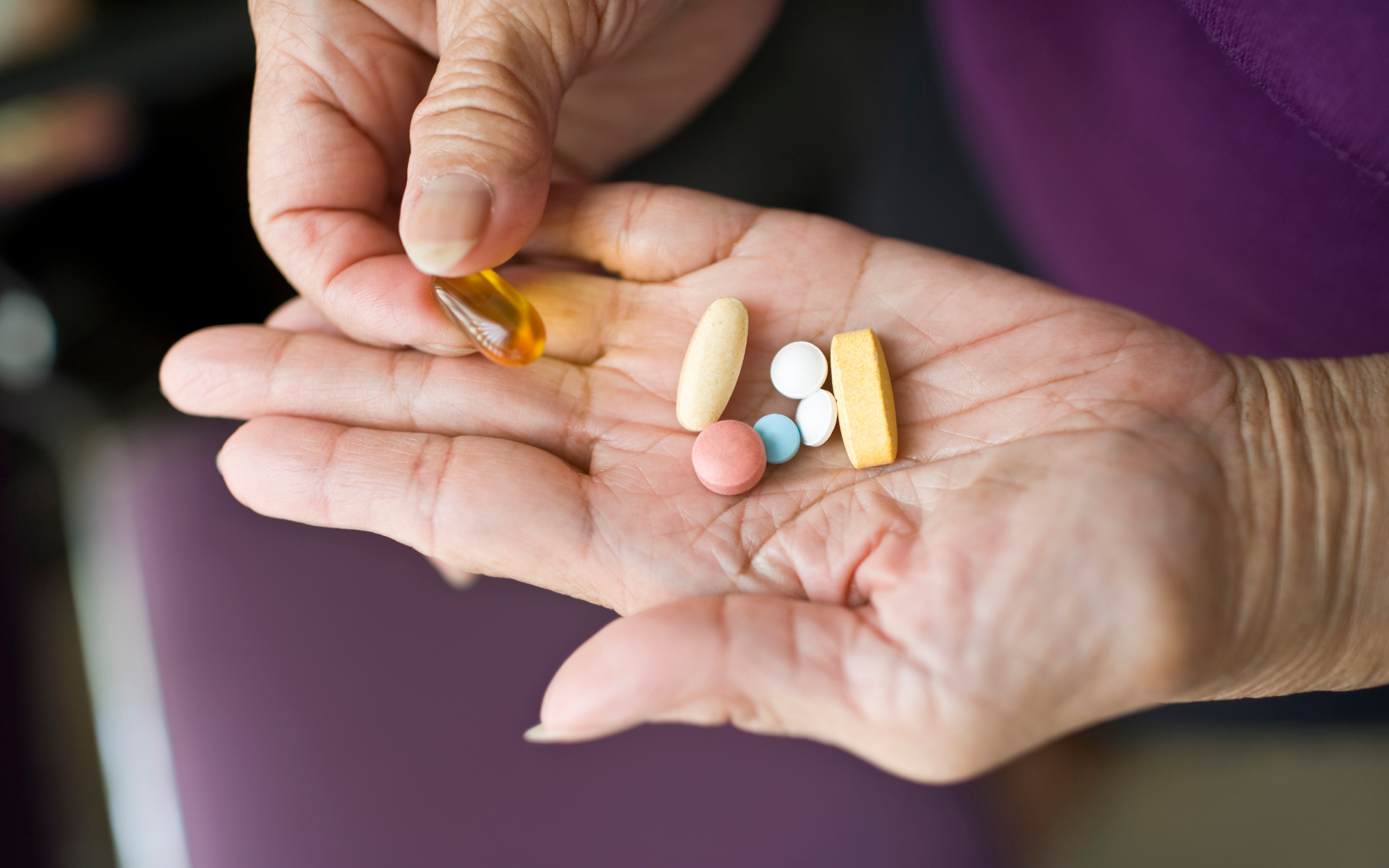The side effects of OAB medication and how they impact patient compliance

If you suffer from overactive bladder (OAB), medication might be a possible solution. There’s just one problem: about 78% of people who start taking OAB drugs stop taking them within the first year. Why? There are many reasons, but frustrating side effects and lackluster results take the cake.
What is overactive bladder?
OAB is a group of urinary symptoms, NOT a disease. About 30% of men and 40% of women in the US suffer from OAB symptoms. The most common ones are a sudden urge to pee (aka urgency), the need to go several times through the day and night (aka frequency), and leaking urine from your bladder (aka incontinence).
In short: OAB makes it feel like you gotta go all the time. It can be uncomfortable and frustrating, while impacting your overall health and wellness.
What are some of the more common drugs used for OAB?
There are tons of potential OAB treatments. Once diagnosed, your doctor will likely suggest lifestyle changes as your first plan of attack. That might include keeping a bladder diary, adjusting your diet, losing weight, or exercises that relax your bladder muscles. Patients who take behavioural treatment seriously can see their pee problems decrease by up to 80%.
But if lifestyle changes aren’t doing the trick, prescription drugs will likely be your doctor’s second line treatment. The most common OAB medications are oral pharmaceutical drugs that relax the bladder muscles and stop them from contracting before your bladder is full. This means your bladder can store urine longer, without any pesky leakage.
Most of these medications are called antimuscarinics. They come in tablet, patch, or topical form and can be prescribed in two different formulations: immediate release and extended release.
Immediate release means you’re typically taking the medication multiple times a day. It can be especially helpful if you want to target bladder issues at specific times — like if you mainly get incontinence at night or if you’re going travelling. Immediate release is the most traditional and least expensive option, but it comes with some substantial side effects. For this reason, extended release formulas are usually prescribed first.
Extended release medications are taken once per day. They tend to cause fewer side effects than immediate release.
Be cautious: some antimuscarinics can be severely damaging for people who have certain conditions or are taking specific medications. For example, people with liver or kidney disease should never take tolterodine. Always talk to your doctor about the right medication for your unique health.
Outside of antimuscarinics, another popular OAB medication is a beta-3-adrenergic agonist. It also relaxes your bladder muscles to avoid involuntary peeing.
What are the most common side effects of OAB medication?
Virtually all OAB drugs come with some collection of side effects, which is why so many people struggle to keep taking them. The type of side effect all depends on the medication.
Common side effects for antimuscarinics include:
- Dry mouth
- Dry or itchy eyes
- Constipation
- Blurred vision
- Indigestion
- Confusion
- UTI
- Urinary retention
- Drowsiness
- Very rarely, irregular heart rhythms or other life-threatening symptoms
- Skin irritation (for patches or topical treatments)
Beta-3-adrenergic agonists typically work just as well as antimuscarinics, but they cause less dry mouth and constipation. Of course, they can cause other side effects, such as:
- High blood pressure
- UTI
- Headaches
- Heart palpitations
- Rash
- Stomach pain
- Diarrhea
Why do people stop taking their OAB medication?
For most people, it’s one of two things: they don’t feel the medication is working or they’re sick and tired of the side effects
Dry mouth and constipation are two of the most common side effects for any OAB medication, which can be incredibly frustrating and uncomfortable to deal with long-term. And if you don’t see your bladder problems going away, it’s easy to just stop taking the medication altogether.
Is it possible to have an adverse reaction or overdose when taking a drug used for OAB?
OAB medication can cause more substantial health problems in certain scenarios.
In cases of severe toxicity or overdose, antimuscarinics could impact the heart and nervous system. This is most common in kids and older adults and could result in heart rhythm changes, hallucinations, seizures, or coma.
People with glaucoma should never take antimuscarinics and those with kidney or liver disease should steer clear of certain medications to avoid complications. OAB drugs can also worsen symptoms of dementia or cognitive decline in older patients.
What can I do if I can’t tolerate the side effects?
If dry mouth is not your thing and lifestyle changes didn’t work either, there are other treatment options that can soothe OAB symptoms.
Botox injections can calm the bladder muscles and prevent urgency and incontinence. You skip the pesky dry mouth and constipation with this treatment, but you’re left with a 20% chance of getting a urinary tract infection. (Psst. Click here to learn how to prevent UTIs just in case).
Another treatment option is sacral neuromodulation. It involves a device that works like a pacemaker for your bladder, regulating the muscles and stimulating the nerves that support bladder function. This treatment does require some surgical procedures to place the device, but once placed, the rechargeable battery (and symptom relief) could last up to 15 years.
There’s also PTNS (percutaneous tibial nerve stimulation), which serves a similar purpose to sacral neuromodulation — just without the pacemaker. Instead, a small needle by the ankle bone is used to stimulate the nerves. This is a time-consuming treatment with results lasting up to four months.
If all of the above sounds a bit too invasive, there’s another option that is incredibly effective — without the side effects.
What’s the best natural supplement for OAB?
Enter: Utiva Bladder Health. This all-natural supplement contains a unique formula that has been approved by Health Canada for 13 separate health improvement claims, including OAB symptoms. If you’re struggling with side effects from harsh medications, this is a safe and effective alternative.
What makes Utiva Bladder Health work so well? 500 mg of proprietary full-spectrum dried cranberry fruit (also known as Flowens®). This unique extract has a proven superpower: strengthening your urinary function. It is believed that through an indirect immune and anti-inflammatory response, Flowens® has the ability to improve the bladder microbiome and relieve your OAB symptoms.
The Utiva Bladder Health formulation has a unique blend of whole cranberry, including seeds, skin, flesh, and juice. This creates a specific profile optimized for urinary health. Its benefits present little to no side effects and are supported by gold standard clinical evidence. For example:
A recent randomized clinical trial monitored 77 patients over 24 weeks. Each patient took 500mg of this proprietary cranberry extract daily. The results were staggering:
- A 57% reduction in urgency episodes
- A 40% reduction in the patient’s perception of their bladder being full
Talk to your doctor about trying Utiva Bladder Health with a 100% money-back guarantee — especially if OAB medications aren’t giving you the results you deserve.
Knowledge is power
Sign up to our newsletter to keep learning!

- Choosing a selection results in a full page refresh.
- Opens in a new window.





